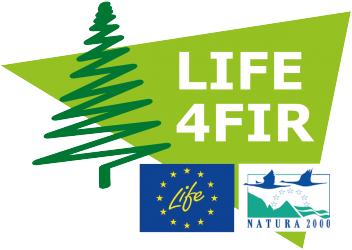Through the LIFE programme, the European Union provides funding for projects to safeguard the environment and nature.
The LIFE programme began in 1992 and has to date co-financed more than 4,600 projects. Until 2013, LIFE had contributed approximately €3.1 billion to the protection of the environment. During the current 2014-2020 funding period the programme will contribute approximately €3.4 billion more.
Several LIFE programs have followed since 1992:
-
- LIFE I (1992-1995): LIFE I funded a total of 731 projects focusing on promotion of sustainable developments and quality of the environment; protection of habitats and of nature; administrative structures and environment services; education, training and information; and actions in countries outside the EU;
- LIFE II (1996-1999): LIFE II was split into 3 categories → LIFE-Nature dedicated to mature and conservation actions, LIFE-Environment dedicated to actions to implement EU environment policy and legislation, and LIFE-Third countries which addressed actions in countries on the shores of the Mediterranean and Baltic sees;
- LIFE III (2000-2004 and then extended to the end of 2006): LIFE III ran for 5 years with an increased budget of €640 million. The scope of the programme from LIFE II was continued, and new accompanying measures were introduced to encourage more multinational projects and networking amongst projects;
- LIFE + (2007-2013): LIFE+ ran for 7 years with an increased budget of €2.143 billion. It was split into 3 categories: LIFE+ Nature and biodiversity, which continued and extended the former LIFE Nature programme; LIFE+ Environment Policy and Governance which continued and extended the former LIFE Environment programme; and LIFE+ Information and Communication, a new component to co-finance projects relating to communication and awareness raising campaigns;
- LIFE (2014-2020): The current LIFE programme has a budget of €3.4 billion. It is divided into two sub-programmes, one for environment (representing 75% of the overall financial envelope) and one for climate action (representing 25% of the envelope). There is also a new category ‘jointly funded integrated projects’, which will operate on a large territorial scale.
The LIFE 2021-27 programme is currently being defined, for which the European Commission proposes to raise the budget of the LIFE programme to €5.45 billion between 2021 and 2027. The new LIFE programme would have four sub-programmes: nature and biodiversity; circular economy and quality of life; climate change mitigation and adaptation; and clean energy transition.
The current LIFE programme is divided into two sub-programmes:
-
- one for climate action;
- one for environment: this sub-programme is in turn subdivided in
- Environment and resource efficiency
- Environmental governance and information
- Nature and biodiversity
LIFE4FIR can be classified in the last category, Nature and biodiversity. The environment sub-programme funds nature conservation projects in particular in the areas of biodiversity, endangered habitats and endangered species. It provides action grants for best practice, pilot and demonstration projects that contribute to the implementation of the EU’s Habitats directive, the EU’s Birds directive, the EU’s biodiversity strategy to 2020, and the development, implementation and management of the Natura 2000 network.
The brown bear, the monk seal and the wolf are among the species that have benefited most from LIFE projects. Over 400 – more than a third – of the endangered species listed in the Birds and Habitats Directives have been the subject of at least one LIFE project. The LIFE funds also funded over 1 000 management plans under the Natura 2000 network. This is an important step in the fight against biodiversity loss. Other projects have created ecological corridors and urban habitats for wild species, introduced climate change adaptation measures, supported ecosystem services and raised awareness of the importance of biodiversity. Over 100 LIFE projects have helped to tackle the problem of invasive alien species, focusing in particular on species such as the American mink, the Japanese polygon and various types of non-native shrimp.

